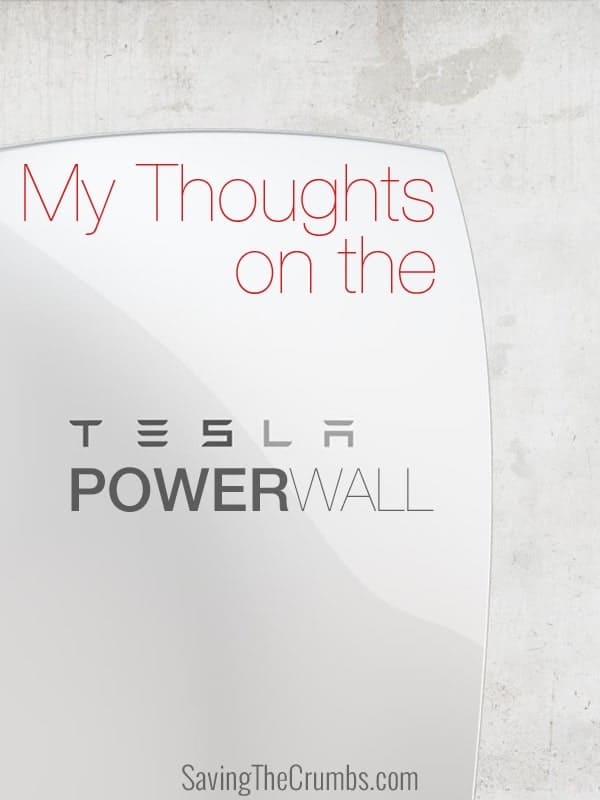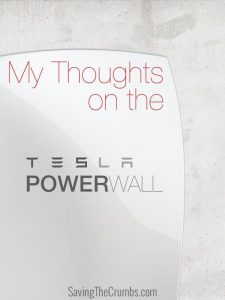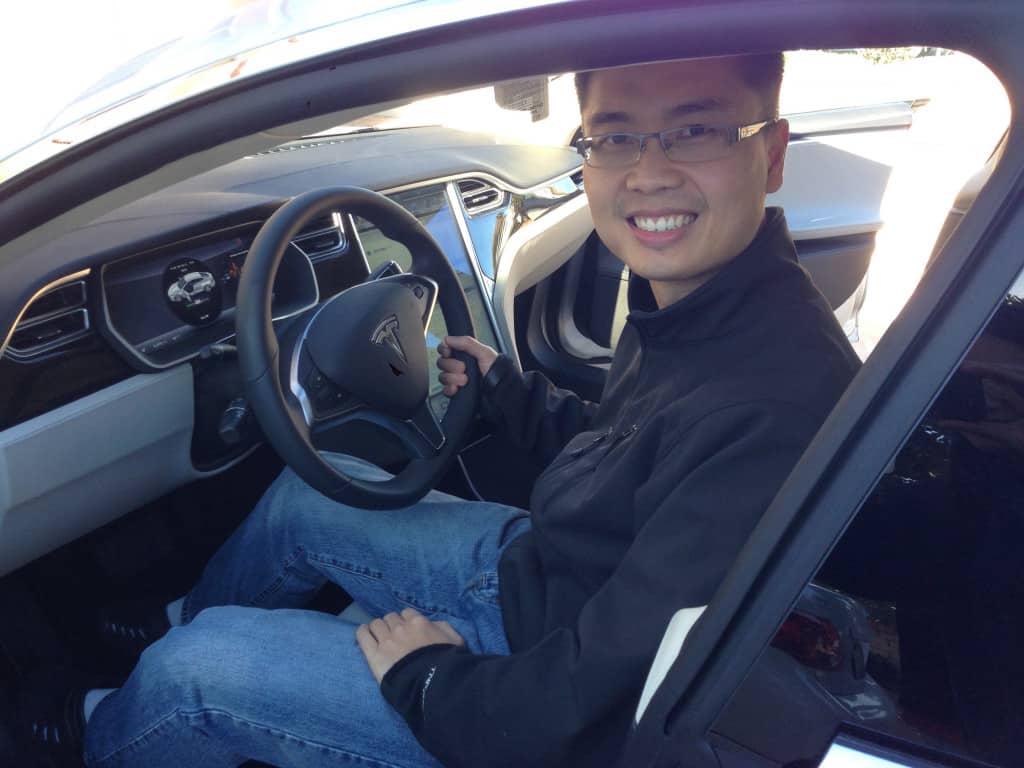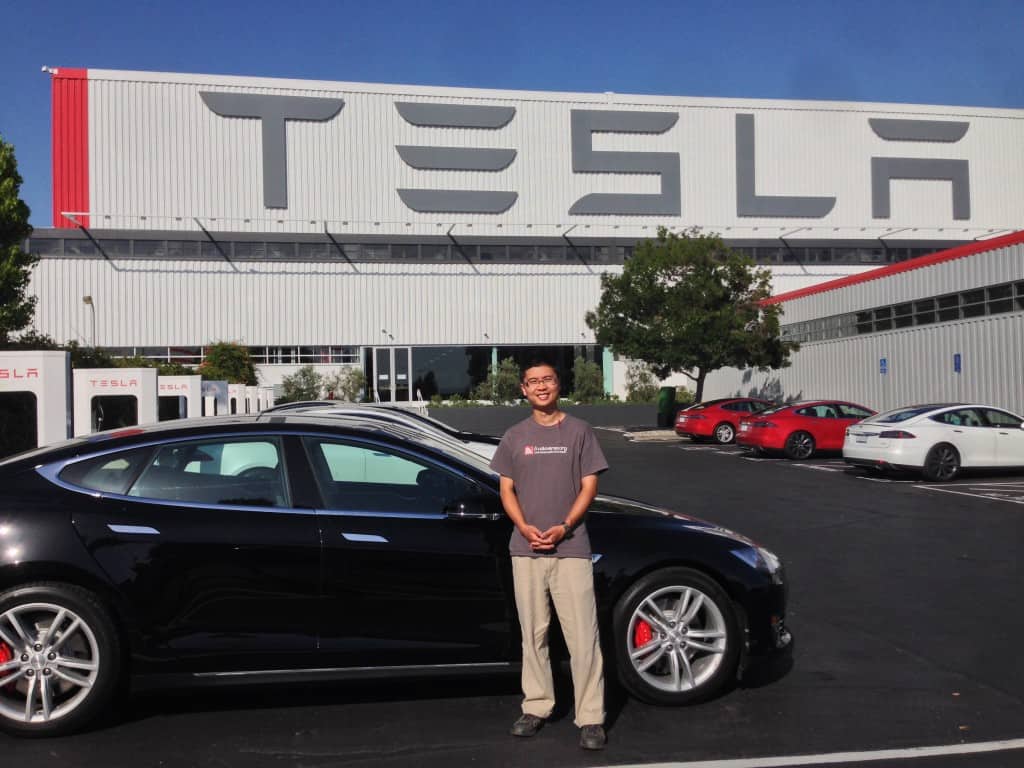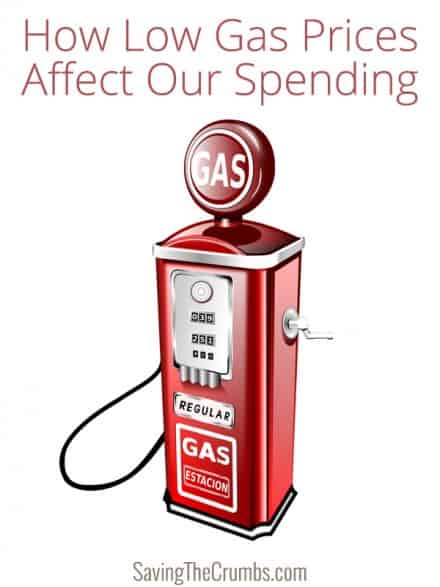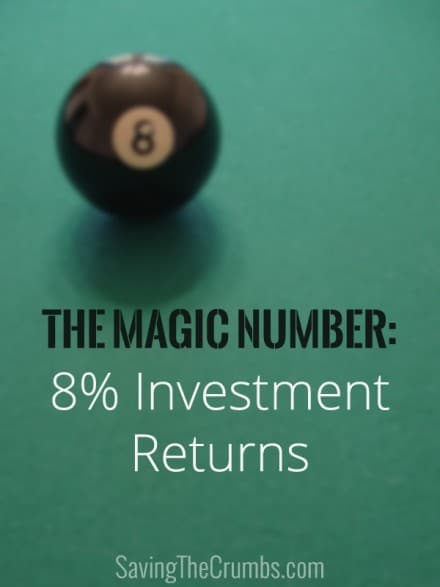If you’ve been keeping up with this blog, you’ll know that we are really into energy saving and even have solar panels installed at our house. (You can read our initial post called, “How We Get Paid by Our Power Company with Solar Panels” and our one-year update on the progress that was recently released.) So you should not be too surprised when I say that I’m also a bit of a Tesla fanboy.
I’ve even got some pictures to prove it.
Here I am pretending to be a Tesla Model S owner.
And here I am at the actual Tesla factory in Fremont, CA. (I would’ve said “Hi” to Elon too, but figured he was busy working on the Model X.)
In fact, I’m such a fanboy that I violated some of my own crumb-saving principles and even bought something from Tesla. No, not a Tesla car, silly! I bought ONE share in the company. Gotta make sure I can make my voice heard in the shareholders meeting sometime, you know? (Disclaimer: Buying individual stocks aren’t my general recommendation or practice–especially high risk ones like TSLA!)
So you would be excused if you thought that I would be the first in line to buy the recently announced Tesla Powerwall home battery pack. But you’d be mistaken!
The Benefits
The Tesla Powerwall is a lithium ion battery pack designed to easily hook up to your house. It costs between $3000-3500 each (before installation) and comes in two sizes, 7 kW and 10 kW. The two main benefits of these batteries are:
- Electricity Arbitrage. In areas where there are different rates for electricity at different times of day, the battery can recharge when rates are lower then we can use the electricity from the battery when the rates are higher. This, in theory, should reduce electricity cost.
- Renewable Energy Storage. These batteries can also store power from renewable energy power plants like solar panels, wind generators, micro-hydro, or anything really. This can be a real boon to the people wanting to go off-the-grid.
Passing on the Powerwall
So why is the Powerwall not for me? Well, firstly I have an awesome power company (EPB) who does not have varying rates at different times of day. In fact, our regular flat rate is one of the nation’s lowest. This means I have no need for electricity arbitrage.
Secondly, the way my solar power generation contract is set up with my power company, I have more to gain in selling as much energy back to the grid as possible than in storing it up, since they pay me a premium for each kilowatt-hour that I sell to them. I wouldn’t save any money by running my home off of a battery. Specifically, I get paid approximately $0.14 for each kWh I produce, whereas I pay about $0.10/kWh for electricity that I buy. So if I charge the Powerwall with my solar panels, I save $0.10 for each kWh I produce and store, but that’s $0.04 less per kWh than if I sold it all back to the grid! To put it in other words, the grid is the “battery” that I charge up with my solar panels.
If I was trying to go off the grid, things get a bit more interesting. But even though the cost of the Powerwall battery is way cheaper than other existing alternatives, it still costs a huge amount to install a large enough bank to meet our home’s energy usage needs. (Which you know are already low!) Right now, I would need at least 4 of them to run my house one day during the coldest time of year (when my energy usage is the highest, and also when it’s most needed). That’s at least $12,000 before any installation costs. My entire solar panel system with installation only cost me $9500 total. Besides, I’m not looking to go off the grid right now.
So in short, the Powerwall is a neat idea that could be a real benefit for some people, but the numbers don’t add up for us right now. Perhaps in a few years, when the price for these units drop and I no longer have a premium from the utility company, it would make more sense.
One Potential Use
Nevertheless, there is one thought that keeps me intrigued about such a home battery pack. That is for emergency backup power. Our home runs 100% on electricity—no propane, no natural gas, and no wood. That’s nice in one sense because our solar panels get to power everything, but that also means that if we ever get a power outage (fortunately we haven’t had one yet), we would be totally stuck with no heat, no stove, and no hot water. A battery that can keep us going for a few days sounds like a good idea for such an eventuality, but then I remember that a simple little gasoline generator costs many times less, which snaps me back to my crumb-saving senses.
Technology Marches On
While I am very interested in things like renewable energy, home batteries, solar panels, and electric cars, I don’t believe that they are always a crumb-saving slam-dunk. I believe we are getting near the cusp of when renewable energy technologies will make more economic sense than traditional fossil fuel technology. But until that day, I’ll keep fanboying in private and will just keep saving up my crumbs. 🙂
What do you think? Are you going to get the Tesla Powerwall for your home?

